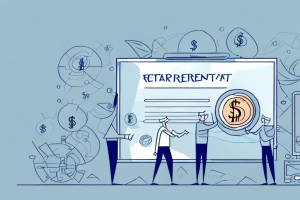Retirement planning can be a daunting task, especially when it comes to determining how long your savings will last. For many individuals, $600,000 may seem like a substantial amount of money. However, it is important to understand that the duration of your retirement funds heavily depends on various factors, including your financial planning, expected expenses, investment choices, lifestyle decisions, and more.
Understanding the importance of financial planning for retirement
Before delving into the specifics of how long $600,000 would last in retirement, it is crucial to grasp the significance of financial planning for your post-work years. Financial planning helps you assess your current financial situation, set achievable goals, and develop a roadmap to secure your future. By understanding your income sources, expenses, assets, and liabilities, you can make informed decisions about your retirement savings and their longevity.
One key aspect of financial planning for retirement is determining your desired lifestyle during your post-work years. This involves considering factors such as where you want to live, the activities you want to engage in, and the level of financial security you desire. By envisioning your ideal retirement lifestyle, you can better estimate the amount of money you will need to save and invest to support that lifestyle.
Another important element of financial planning for retirement is managing and minimizing potential risks. This includes evaluating and mitigating risks such as inflation, market volatility, and unexpected expenses. By diversifying your investment portfolio, having an emergency fund, and considering insurance options, you can help protect your retirement savings from potential setbacks and ensure a more secure financial future.
Calculating your retirement needs: A breakdown of expenses
To determine how long $600,000 would last in retirement, it is essential to carefully analyze your anticipated expenses during this phase of your life. Start by creating a detailed breakdown of your expected costs, including housing, healthcare, transportation, food, utilities, travel, and leisure activities. By categorizing and estimating each expenditure, you can gain a clearer picture of your financial needs during retirement.
Additionally, consider potential inflationary factors when estimating your retirement expenses. The rising cost of living due to inflation can erode the purchasing power of your savings over time. Adjusting your calculations to account for inflation is essential to ensure you have enough funds to maintain your desired lifestyle throughout your retirement years.
The role of inflation in retirement planning
As mentioned above, inflation plays a crucial role in determining how long your retirement savings will last. While it is challenging to predict future inflation rates accurately, historical data can provide some insights. On average, inflation tends to increase prices by approximately 2-3% per year. However, it is important to note that inflation rates may vary, and unexpected spikes can significantly impact your purchasing power.
When considering the impact of inflation on your retirement funds, it is advisable to use a conservative estimate. Assuming an average annual inflation rate of 3%, your $600,000 nest egg can potentially lose purchasing power over time. Consequently, you may need to adjust your spending or plan for additional income sources to offset the effects of inflation and ensure the longevity of your savings.
Evaluating your savings: Is $600,000 enough for a comfortable retirement?
Now that we have established the importance of financial planning, expense calculations, and the impact of inflation, it is time to assess whether $600,000 is sufficient to fund a comfortable retirement. The answer to this question depends on various factors, such as your desired lifestyle, retirement age, expected lifespan, investment returns, and other potential sources of income.
On a surface level, $600,000 may seem substantial. However, it is crucial to consider how long you anticipate your retirement to last. If you retire at the age of 65 and assume a life expectancy of 85, you would need to make your savings last for 20 years. With $600,000, this equates to approximately $30,000 per year. This figure may cover your basic expenses, but it may not allow for a lavish lifestyle or unforeseen circumstances.
Considering your lifestyle: How will your spending habits impact your savings?
Your lifestyle choices and spending habits profoundly affect the longevity of your retirement funds. While it is essential to plan for your desired retirement lifestyle realistically, making conscious decisions to control your spending can help stretch your savings. Consider prioritizing your expenses, distinguishing between needs and wants, and practicing financial discipline to ensure your funds last as long as possible.
Exploring investment options to make your retirement nest egg last longer
One way to increase the lifespan of your $600,000 retirement savings is to explore different investment options. While it is important to consider your risk tolerance and investment knowledge, diversifying your portfolio can potentially generate higher returns and mitigate the impact of market volatility. Consult with a financial advisor to determine an investment strategy that aligns with your goals and helps maximize the longevity of your retirement nest egg.
The impact of market volatility on your retirement funds
Market volatility can significantly impact the duration of your retirement savings. Economic downturns, sharp market declines, and uncertain investment climates can erode your portfolio’s value. It is crucial to develop a long-term investment plan that includes provisions for market fluctuations, such as diversification, asset allocation, and periodic portfolio rebalancing. A sound investment strategy can help mitigate the impact of market volatility and ensure the stability of your retirement funds.
Strategies to stretch your retirement savings and make them last
While $600,000 may not guarantee a luxurious retirement, there are strategies you can employ to stretch your savings and maximize their longevity. Consider calculating a sustainable withdrawal rate that balances your income needs with preserving your capital. Furthermore, explore avenues for additional income, such as part-time work or passive income streams. Each dollar saved and earned can contribute to extending the duration of your retirement funds.
Creating a realistic budget for a sustainable retirement lifestyle
Creating a realistic budget is fundamental to maintaining a sustainable retirement lifestyle. Carefully evaluate your expected income, expenses, and potential sources of inflationary pressures. By crafting a budget that aligns with your retirement goals and financial resources, you can better manage your spending and ensure your savings last throughout your retirement years.
Assessing the potential benefits of downsizing in retirement
Cohabitating in a larger home can lead to significant expenses, such as high maintenance costs, property taxes, and utility bills. Assessing the potential benefits of downsizing in retirement is essential to determine whether you can convert your housing equity into additional retirement savings. By downsizing, you can potentially reduce your expenses, free up extra cash, and extend the duration of your retirement funds.
The pros and cons of relocating to a more affordable area during retirement
Relocating to a more affordable area during retirement can also impact the duration of your savings. Lower living costs, affordable housing options, and potential tax advantages are among the benefits of moving to a more economical location. It is important to weigh the pros and cons of such a decision, considering factors like proximity to family and friends, access to healthcare services, and the general quality of life offered by the new area.
Healthcare expenses in retirement: Planning for unexpected costs
Healthcare expenses can be a significant financial burden during retirement. As you age, the likelihood of needing medical care increases, potentially leading to additional costs. It is crucial to plan for unexpected healthcare expenses in your retirement calculations. Consider obtaining adequate health insurance coverage, exploring long-term care insurance options, and allocating funds to a healthcare contingency plan to protect your retirement savings.
Maximizing Social Security benefits to supplement your savings
Maximizing your Social Security benefits is another essential aspect of retirement planning. Social Security provides a valuable source of income that can supplement your savings. By carefully considering the timing of claiming your benefits and exploring different strategies, such as spousal benefits and delayed retirement credits, you can optimize your Social Security income to enhance the longevity of your retirement funds.
Exploring part-time work options to supplement your retirement income
Part-time work can provide an additional income stream during retirement. Engaging in part-time employment opportunities not only supplements your retirement funds but also keeps you mentally and socially active. Explore various part-time work options that align with your skills and interests, allowing you to enjoy a fulfilling retirement while extending the duration of your savings.
Longevity risk: How long should you plan for your money to last?
Longevity risk refers to the uncertainty of how long you will live and how that duration will impact your savings. Planning for a longer life expectancy ensures that your retirement funds do not run out prematurely. Taking into account your family history, health, and lifestyle choices, estimate a realistic life expectancy. By being prepared for a longer retirement, you can ensure your money lasts throughout your entire post-work life.
Adjusting your withdrawal rate: Balancing income needs with preserving capital
Withdrawal rate refers to the amount of money you withdraw from your retirement savings each year. Balancing your income needs with preserving your capital is crucial to ensure the longevity of your funds. Experts suggest following the 4% rule, which states that you can withdraw 4% of your initial retirement savings each year, adjusted for inflation. By adjusting your withdrawal rate based on your financial circumstances, you can strike a balance between your income requirements and the preservation of your capital.
The importance of diversification in managing retirement investments
Diversification plays a vital role in managing retirement investments and ensuring their longevity. By spreading your investments across various asset classes, such as stocks, bonds, real estate, and cash equivalents, you reduce your exposure to any single market or sector. Diversification helps mitigate risks and potentially enhances returns. Working with a financial advisor can help develop a comprehensive diversification strategy that aligns with your risk tolerance and retirement goals.
Evaluating the impact of taxes on your retirement savings and withdrawals
Taxes can significantly impact the duration of your retirement savings. Understanding the tax implications of different investment choices, income sources, and withdrawal strategies is essential to make informed decisions. Consult with a tax professional or financial advisor to evaluate the potential tax burden on your retirement funds and explore strategies to minimize your tax liability, ultimately extending the lifespan of your savings.
Seeking professional advice: Working with a financial advisor for a secure retirement future
Given the complexity and unique circumstances surrounding retirement planning, seeking professional advice is invaluable. A financial advisor can provide expertise, guidance, and personalized strategies to help secure your retirement future. By leveraging their knowledge and experience, you can navigate the intricacies of retirement planning and make informed decisions regarding your $600,000 savings to ensure they last the duration of your post-work life.
In conclusion, determining how long $600,000 would last in retirement depends on various factors. Careful financial planning, expense calculations, investment choices, lifestyle decisions, and realistic budgeting are essential components of securing a comfortable retirement. By considering these factors in exhaustive detail, in addition to exploring strategies to stretch your savings, optimizing additional income sources, and seeking professional advice, you can maximize the longevity of your $600,000 retirement nest egg.



